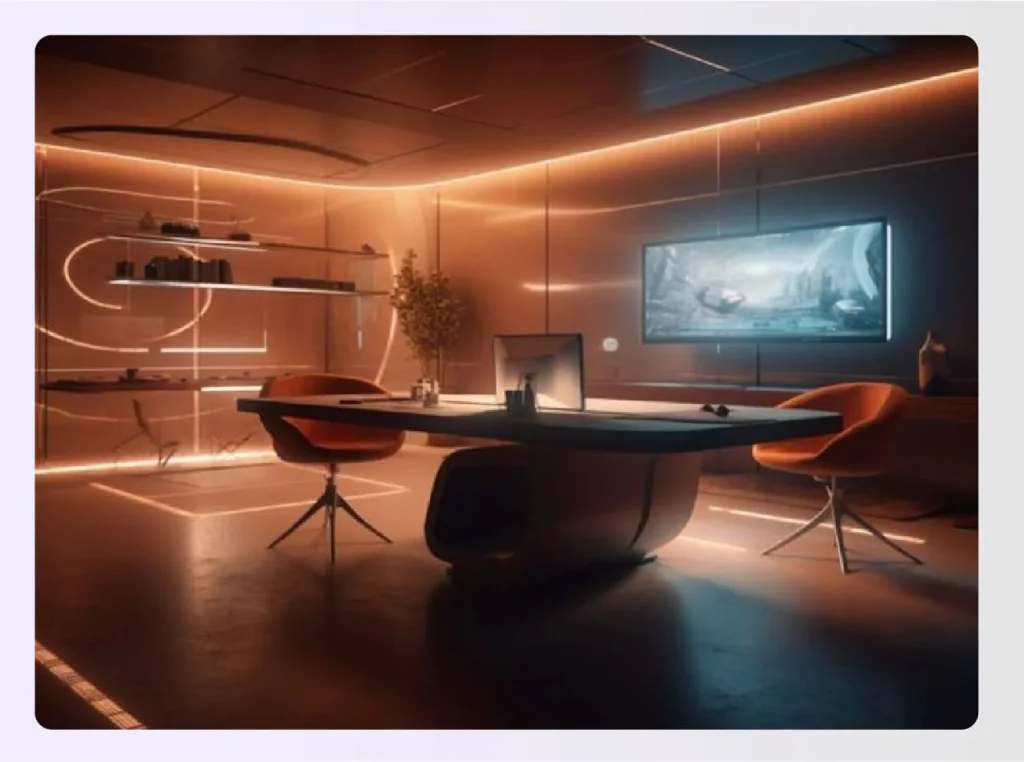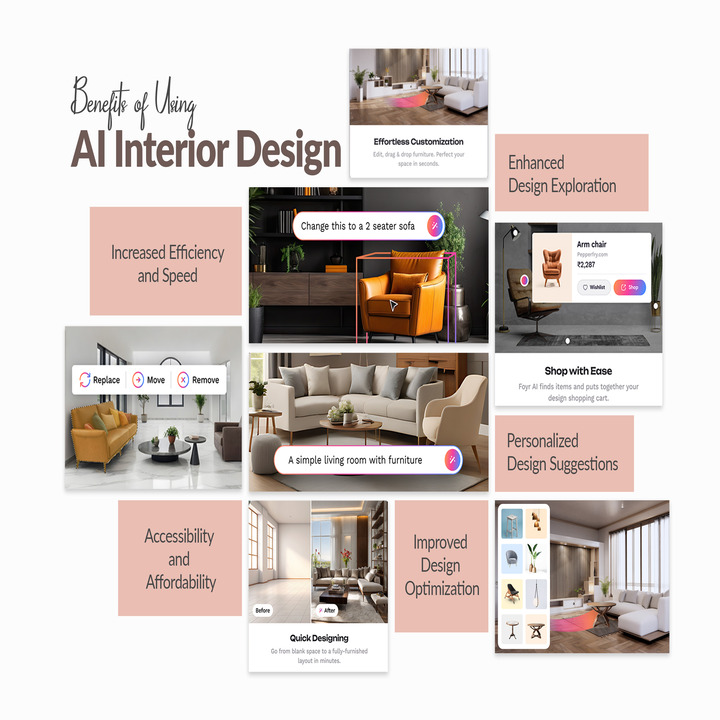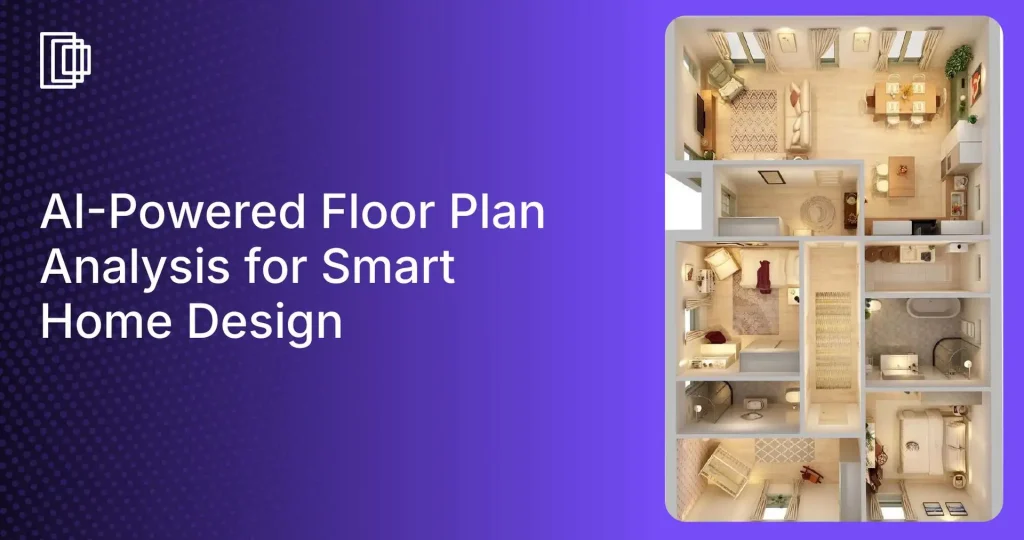In recent years, the interior design industry has undergone a remarkable transformation, driven by advancements in artificial intelligence. What was once a field primarily reliant on manual sketches, physical mood boards, and imagination has now entered a new era of technological sophistication.
At the forefront of this revolution stands Foyr Neo, an innovative platform that leverages cutting-edge AI technology to redefine the possibilities of interior design services. The future of interior design with AI is happening right now on your screen.
The Intersection of AI and Interior Design
AI design is increasingly becoming a design collaborator, not just a tool. It’s here to handle the heavy lifting so you can focus on the creative aspects of their work. Here is a technical breakdown of how it works:
- User Preference Modeling: AI systems gather structured data (e.g., room dimensions, budget) and unstructured data (e.g., mood boards, past selections) to create user preference vectors.
- Design Generation via Generative Adversarial Networks (GANs): These networks synthesize new layouts and design ideas by learning from vast databases of successful past designs.
- Machine Learning-Driven Pattern Recognition: Algorithms identify different styles—like mid-century or Scandinavian—across thousands of spaces and match them to user inputs.
- Natural Language Processing (NLP): Some systems allow interior designers to describe requirements conversationally, converting them into design specifications.
- Recommendation Engines: Similar to Netflix, AI suggests products or layouts based on collaborative filtering and historical behavior data.
Experience the future of interior design with AI through hyper-realistic rendering
What Makes Foyr Neo Technically Unique?
Foyr Neo integrates multiple AI components into a unified cloud-based platform, setting it apart from standard interior design software.
- Rule-Based + Generative Design Engine: Balances functional constraints (clearance, traffic flow) with stylistic goals.
- Context-Aware Style Advisor: Tailors suggestions using style detection from past designs and predictive tagging.
- Energy-Aware Layout Modeling: Optimizes natural light usage, suggests HVAC-efficient configurations, and improves energy efficiency.
- Photorealistic Ray Tracing Render Engine: Produces virtual reality ready visuals based on real-world lighting simulation.
Traditional vs. AI-Powered Interior Design Workflows
The future of interior design with AI dramatically shifts your daily grind. It moves you away from tedious, routine tasks and back into the creative process.
| Design Step | Traditional Workflow | AI-Powered Workflow (Foyr Neo) |
| Needs Discovery | Interviews, surveys | Real-time preference mapping |
| Concept Generation | Manual sketching, trial and error | Instant parametric layouts |
| Visualization | Mood boards, 2D renderings | Real-time 3D with lighting simulation |
| Client Feedback | Iterative revisions via email | Shared cloud dashboard with annotation |
| Final Approval | On-site visits | Virtual walkthroughs + render sign-offs |

Core AI Features in Foyr Neo
Foyr is not just keeping up with design trends; it’s setting them. Here is how Foyr is actively building the future of interior design with AI.
1. Smart Space Planning with Constraint Solving
Foyr uses Boolean logic and constraint-based solvers to generate functional layouts that actually work in the real world. It dynamically adjusts based on seating capacity, circulation paths, and light sources, ensuring your room design is both beautiful and livable.
2. Style & Color Matching via Deep Learning
Using convolutional neural networks (CNNs) trained on labeled design datasets, Foyr detects style cues (e.g., Japandi vs. Industrial). It then recommends complementary combinations and interior color schemes, ensuring your final result is cohesive.
3. Sustainability Optimization Module
The future is green. Foyr integrates LEED recommendations and real-time energy modeling to flag energy-intensive configurations and suggest sustainable alternatives, reducing the environmental impact of your projects.
4. Trend Forecasting Engine
By scraping design sources like Pinterest and Houzz, Foyr classifies emerging trends via NLP and image recognition. It alerts you when a chosen design is becoming dated or gaining popularity, acting as your personal predictive analytics tool for style.
Read also – Houzz Pro alternatives
Real-World Application: Workspace Redesign with Foyr Neo
A digital marketing agency used Foyr Neo to embrace the future of interior design with AI:
- Upload existing CAD files and convert them into editable 3D models.
- Generate 4 unique open-office layout options using the AI layout engine.
- Visualize and tweak materials based on client branding via the Style Advisor.
- Conduct final client sign-off via VR walkthrough.
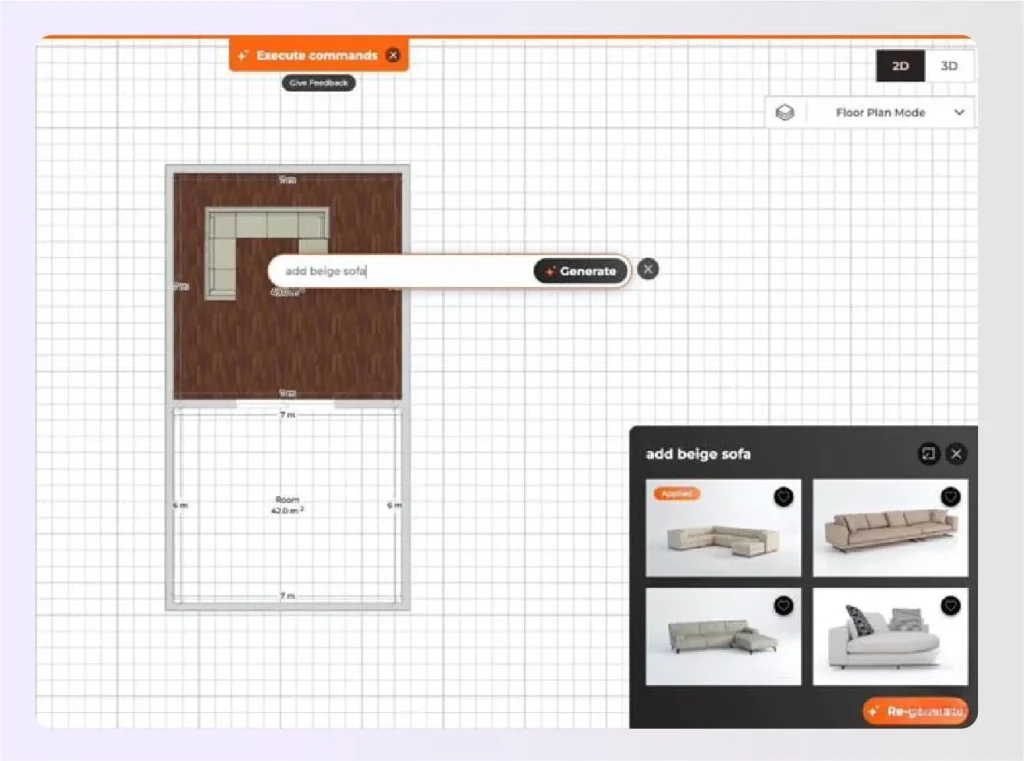
Balanced Benefits and Tradeoffs
As we move toward the future of interior design with AI, it’s important to balance new tools with your unique skills.
For Designers
You get to increase your throughput by automating time-consuming drafting and sourcing. AI provides design solutions and surfaces ideas beyond your default patterns, enhancing exploration. However, be wary of the over-reliance risk; designs can become overly templated without your critical human curation and human touch.
For Clients
Clients benefit from design democratization, bringing high-end design within reach. The process offers more transparency, as 3D design renders feel more real than flat 2D plans. The tradeoff is a potential subjectivity gap, where AI may struggle to translate nuanced cultural or emotional intelligence preferences that only you can understand.
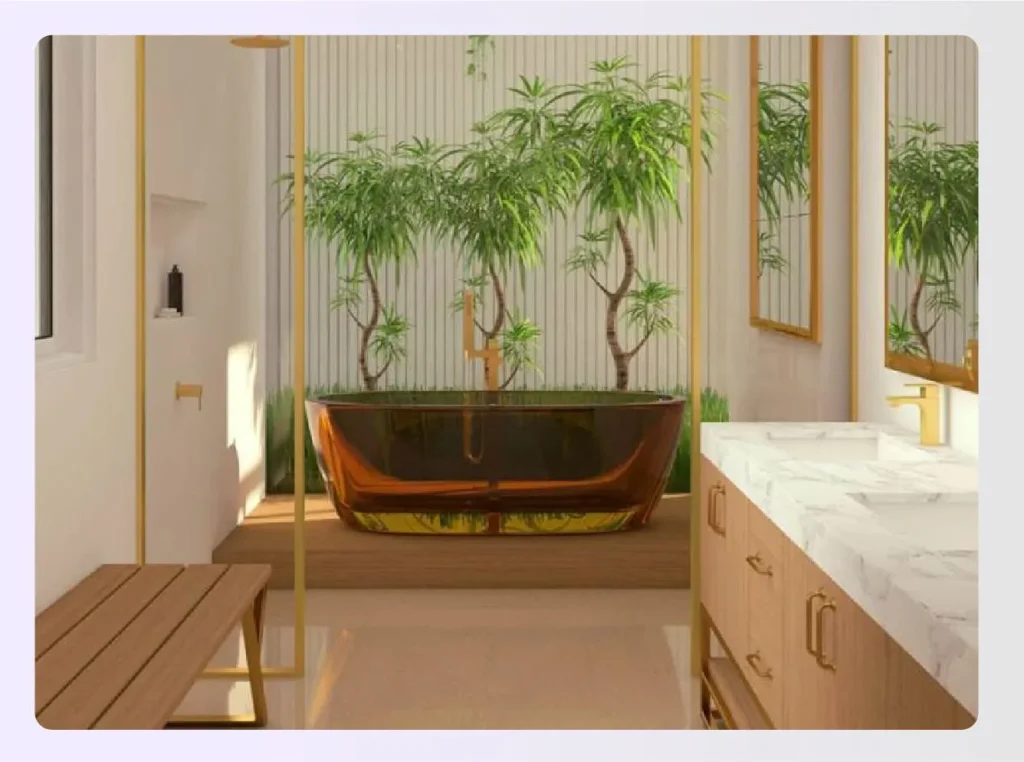
Tool Comparison: How Foyr Neo Stacks Up
While many interior design tools exist, Foyr Neo is uniquely positioned for professionals ready for the future of interior design with AI.
| Platform | Key Strengths | Limitation | Best Suited For |
| Foyr Neo | Fast layouting, photorealistic renders, AI styling | Limited furniture sourcing integration | Agencies, designers with high workflow |
| Modsy | Retail product integration, photorealistic visuals | Limited control for pros | Homeowners, DIYers |
| Cedreo | Construction-ready 2D/3D floor plans | Not style-focused | Builders, contractors |
| Planner 5D | Easy interface, affordability | Basic rendering, less AI depth | Students, early-stage learners |

What’s Next: The Future of AI in Interior Design
The future of interior design with AI is just getting started. Expect breakthroughs like:
- AI Co-Design Assistants: Chat-based prompts that help explore design options interactively.
- Data-Driven Carbon Impact Calculators: Estimate CO₂ emissions of materials and lighting plans.
- Neuroaesthetic Tuning: Algorithms trained on neuroscience data to suggest designs that boost well-being.
Foyr Services is already prototyping some of these features, building a future where design intelligence is contextual, predictive, and emotionally aware.
Get Started with the Future of Design Today With Foyr
The future of interior design with AI is just getting started, and Foyr is already prototyping what’s next. Imagine using AI Co-Design Assistants to explore layout suggestions via chat, or Neuroaesthetic Tuning to create spaces that scientifically boost well-being.
You will even be able to use Data-Driven Carbon Impact Calculators to estimate emissions for modern real estate projects. Foyr is building a future where design intelligence is contextual, predictive, and emotionally aware.
AI is not replacing designers, it’s augmenting them. By blending machine intelligence with human creativity, tools like Foyr Neo make project management faster and your designs more impactful. Don’t just read about the future of interior design with AI, use it. Whether you need a mobile app for on-the-go viewing or a full desktop suite, as a leading interior design software, Foyr has you covered.
Ready to join the revolution? Schedule a one-on-one demonstration with our team and discuss how Foyr Neo can be integrated into your specific workflow. Experience Foyr Neo’s capabilities with a 14-day free trial.
Conclusion:
AI is changing how you offer design services by removing technical bottlenecks from your daily workflow. You can now focus entirely on creativity while Foyr Neo handles the complex calculations and rendering tasks in the background.
Our interior design software serves as a powerful partner that amplifies your unique artistic vision. With Foyr Neo, you can:
- Access projects from anywhere with internet connectivity.
- Create immersive 3D walkthroughs and interactive experiences for clients.
- Design custom furniture pieces from scratch.
- Adjust camera positions using the pan feature for the perfect view.
- Accelerate the approval process by sharing real-life views with clients.
The best part is that you can streamline your entire operation and deliver professional results without the steep learning curve of traditional software. Start scaling your business today with Foyr Neo. Start with a 14-day free trial.
FAQs
How is AI enhancing creativity in the interior design process?
AI is transforming interior design services by automating repetitive tasks and streamlining project workflows, allowing designers to focus more on creative aspects. With AI-powered design tools, designers can generate innovative layouts, personalized recommendations, and even eco-friendly material alternatives. This technology enhances the overall design experience, making it more accessible and efficient while supporting designers in producing unique, high-quality results.
Can AI redesign my living room?
Yes, AI tools like Foyr Neo can help redesign your living room by analyzing your room dimensions and suggesting optimal furniture arrangements and interior color schemes. You can input your preferences, and the AI will generate multiple layout options and visualize them in 3D, helping you see the potential of your space before buying a single piece of furniture.
Can AI remodel a house?
AI cannot physically remodel a house, but it is an invaluable tool for planning a remodel. It can visualize structural changes, test different materials, and even predict material costs before construction begins. This helps homeowners and contractors align on the vision, reducing costly errors during the actual physical remodeling process.
What are the benefits of using Foyr Neo in interior design?
Foyr Neo stands out as the best AI tool for designers because it’s an all-in-one cloud-based platform. It drastically reduces design time by combining smart floor planning, 3D modeling, and 12K rendering in one seamless workflow. You don’t need powerful hardware or multiple subscriptions—just your creativity and a browser.
Read also – Houzz Pro alternatives




